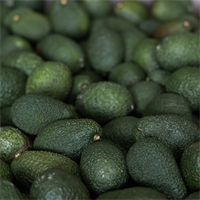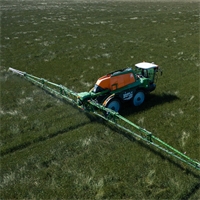04Sep
Pasture renewal: a key investment for farm productivity
Pasture renewal is a crucial practice for improving the productivity and profitability of a farm. By replacing underperforming pastures with new, high-yielding varieties, farmers can significantly enhance their pasture's performance, resulting in better livestock health and increased farm returns. With the right approach, the benefits of renewed pasture far outweigh the costs, providing a sustainable and effective means to enhance farm performance.
Why renew pastures?
Over time, pastures naturally deteriorate due to factors such as weed invasion, drought, poor soil fertility, drainage issues, pests, diseases, and overgrazing. These conditions lead to a decline in desirable plant species and an increase in less productive or unproductive plants. As a result, old pastures produce less dry matter, have lower metabolisable energy (ME), and negatively impact livestock performance.
Renewing pastures is one of the most effective investments for enhancing farm productivity. New pastures can increase dry matter production per hectare. This improvement is not just limited to high-input farms; any grazing-based operation can benefit from a well-planned pasture renewal programme.
Key steps in pasture renewal
- Identify underperforming paddocks: Begin by identifying the poorest-performing paddocks on your farm. Use tools such as grazing records, pasture condition scores, and visual assessments to determine which paddocks require renewal. Consider factors like the number of grazing’s per paddock, dry matter yield, and overall pasture condition.
- Diagnose the problems: Understanding why a paddock is underperforming is crucial. Common issues include poor soil fertility, drainage problems, compaction, weed infestation, and insect pests. Conduct soil tests to check for nutrient deficiencies and pH levels. A visual soil assessment can help identify compaction or drainage issues that need to be addressed before renewal.
- Choose the right renewal method: There are several methods for renewing pastures, the choice of method depends on the specific conditions of your farm and the severity of the pasture's decline. Methods include:
- Grass-to-Grass: Directly replacing the old pasture with new grass.
- Grass-to-Crop-to-Grass: Planting a forage crop before establishing the new pasture, which helps break pest and disease cycles.
- Undersowing: Drilling seed into existing pasture to introduce new species without fully removing the old pasture.
- Plan and prepare: Proper planning is essential for successful pasture renewal. Start preparing 6-18 months before the intended sowing date. Ensure the paddock is free of weeds and pests, and that soil conditions are optimal for seed germination and growth. Use appropriate herbicides and consider using insecticide-treated seeds to protect young seedlings from pests.
- Select suitable seed varieties: Choose the most suitable grass and clover cultivars for your region and farm system. Consider factors such as the heading date, endophyte type, and additional species that might be beneficial.
- Implement proper management practices: Newly established pastures require special management during their first year. Grazing management is critical; avoid overgrazing and ensure animals are removed before they cause damage to the young plants. Conduct regular checks for pests and weeds and apply fertilisers to encourage healthy growth and tillering.
Common mistakes to avoid
To maximise the success of pasture renewal, avoid these common pitfalls:
- Inadequate planning: Not planning the renewal process well in advance can lead to poor results.
- Incorrect sowing practices: Sowing seeds at incorrect depths or mixing incompatible species can reduce establishment success.
- Poor pest and weed management: Failing to control pests and weeds effectively can jeopardise new pasture establishment.
- Overgrazing new pastures: Grazing too soon or with heavy stock can damage new pastures and reduce their longevity.
Assessing and reviewing
After completing the pasture renewal, it's important to review the results. Assess the new pasture's performance and identify areas for improvement. This ongoing review helps refine future renewal strategies and ensures continued productivity gains.
For more information or assistance with selecting the right seed types and treatments for your pasture renewal, contact your Ruralco representative
Related

Northland’s humid sub-tropical climate means avocados have always thrived in the top part of the No...
Read More

From an under-resourced dryland sheep farm to a highly productive mixed cropping operation, Valetta ...
Read More

A Christchurch family fishing company has placed one foot in the sea and another on the land with th...
Read More

With herbicide resistance rising in New Zealand, arable farmers are being warned not to continually ...
Read More

For the next three months we will look at the following: fodder crops, pre-emergence sprays on autum...
Read More

Through Ruralco’s website platform all the deals in this year’s Instore Days will be online, with ...
Read More